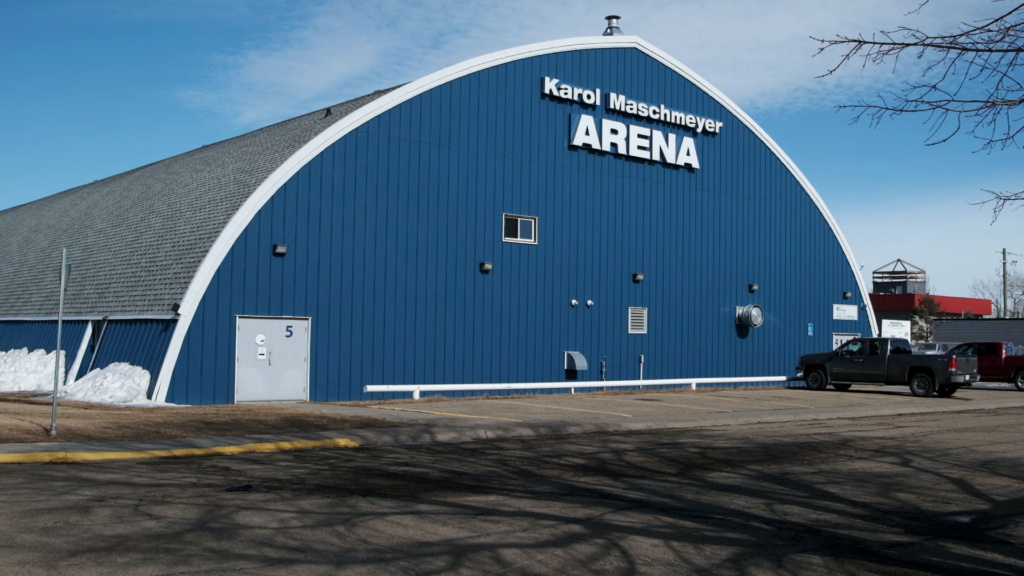Nestled in the Edmonton Metropolitan Region of Canada lies the charming town of Bruderheim, Alberta. Tucked just north of the junction of Highway 15 and Highway 45, this quaint locale sits approximately 47 kilometers (29 miles) northeast of Edmonton. But Bruderheim is more than just a dot on the map—it’s a place where history runs deep and community spirit thrives.

The town’s name, Bruderheim, is a fusion of two German words: “Bruder,” meaning brother, and the suffix “-Heim,” signifying home. Translated to English, Bruderheim becomes “Home of the Brother,” a fitting moniker for a town known for its strong kinship and camaraderie.
One of the defining moments in Bruderheim’s history occurred on March 4, 1960, when the town was graced with a spectacular event: the Bruderheim meteorite fall. This celestial occurrence left an indelible mark on the town’s landscape and collective memory, weaving itself into the fabric of Bruderheim’s rich history.
Adding a touch of Hollywood glamour to this small town is the Bruderheim Arena, which served as a shooting location for the 2005 film Santa’s Slay. Amidst the hustle and bustle of production crews and movie magic, Bruderheim basked in the spotlight, showcasing its unique charm to the world.
But Bruderheim’s story goes beyond celestial phenomena and silver screen appearances. It’s a tale woven with threads of resilience, community, and progress.
The Walker School District #1705 stands as a testament to Bruderheim’s commitment to education. Established on October 15, 1907, this four-room schoolhouse served as a beacon of learning until tragedy struck in 1927 when fire consumed the building. Rising from the ashes, a new school was erected, continuing to nurture young minds until 1980, when the Bruderheim School in Brookside Park opened its doors.

The Victoria Hotel, a landmark on Queen Street, has witnessed the ebb and flow of Bruderheim’s history. Built in 1906 by the Krause family, this storied establishment has changed hands countless times, weathering the storms of time while retaining its character and charm. During the Spanish Influenza of 1918-1919, the hotel transformed into a temporary hospital, offering refuge and care to those in need during a tumultuous period in history.
Religious heritage also runs deep in Bruderheim, with the Andreas Lilge home serving as the first place of worship in the area. Lilge’s efforts to establish a Moravian congregation paved the way for the formation of the community’s spiritual backbone, fostering a sense of unity and faith among early settlers.
Agriculture has long been the lifeblood of Bruderheim, with early homesteaders toiling the land with unwavering dedication. From Clydesdale and Percheron horses powering the fields to the establishment of a cheese factory in 1923, farming has shaped the landscape and livelihoods of Bruderheim residents for generations.
Transportation milestones marked significant chapters in Bruderheim’s development, with the completion of the Canadian Northern Railway line in 1905 heralding a new era of connectivity and progress. Telephone services, introduced around 1910, further bridged the gap between neighbours, facilitating communication and community bonds.

As the sun sets on Bruderheim, casting a warm glow over its historic streets, one thing becomes clear: this town is more than just a collection of buildings and roads. It’s a tapestry of stories, woven together by the hands of time and the hearts of its people. And as Bruderheim continues to evolve and grow, its history remains a beacon of strength and resilience, guiding future generations forward into the unknown.
So, whether you’re a visitor passing through or a resident proud to call Bruderheim home, take a moment to pause and appreciate the rich tapestry of history that surrounds you. In Bruderheim, every street corner tells a story, and every landmark holds a piece of the town’s enduring legacy.

YouTube link:
